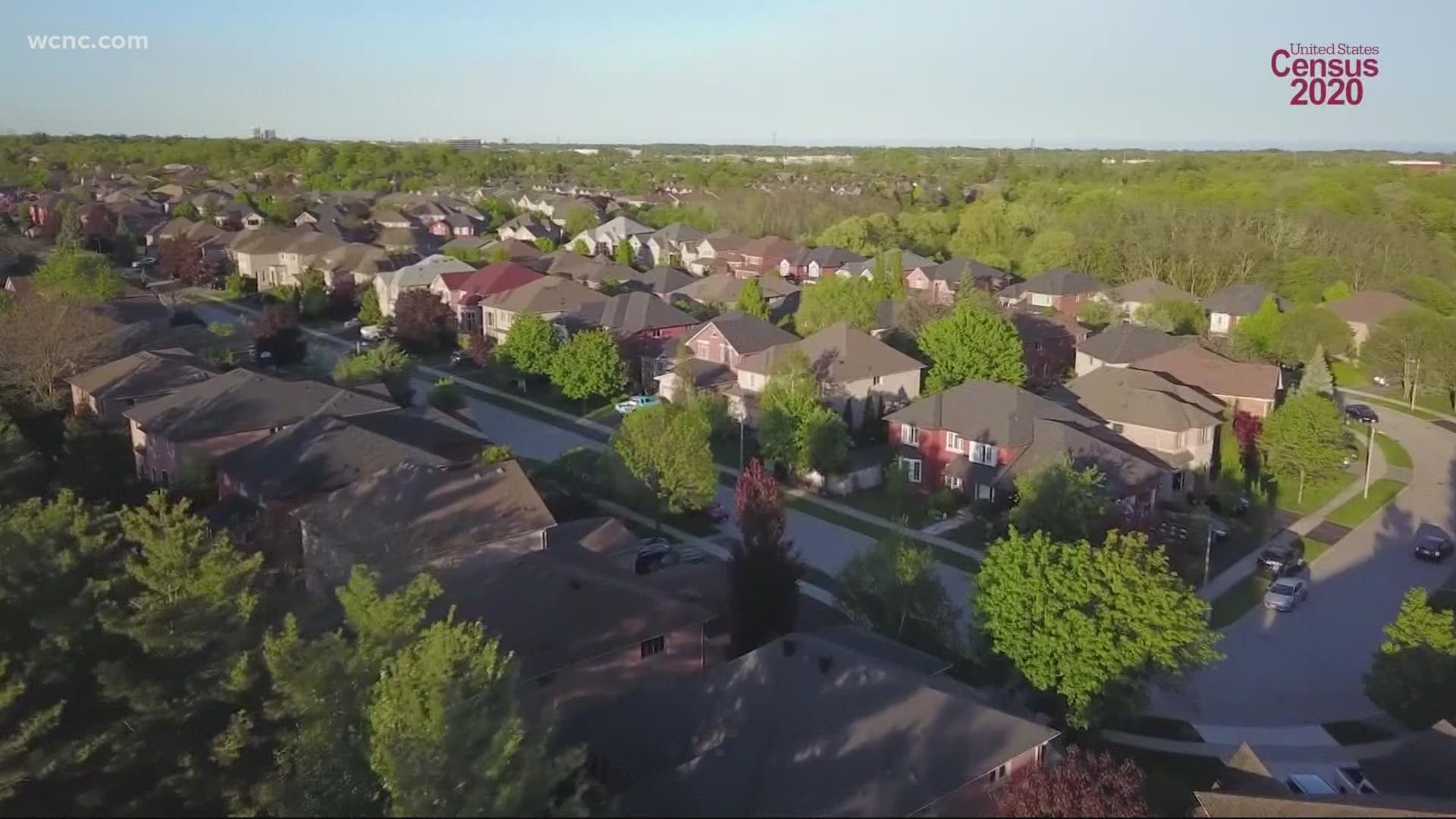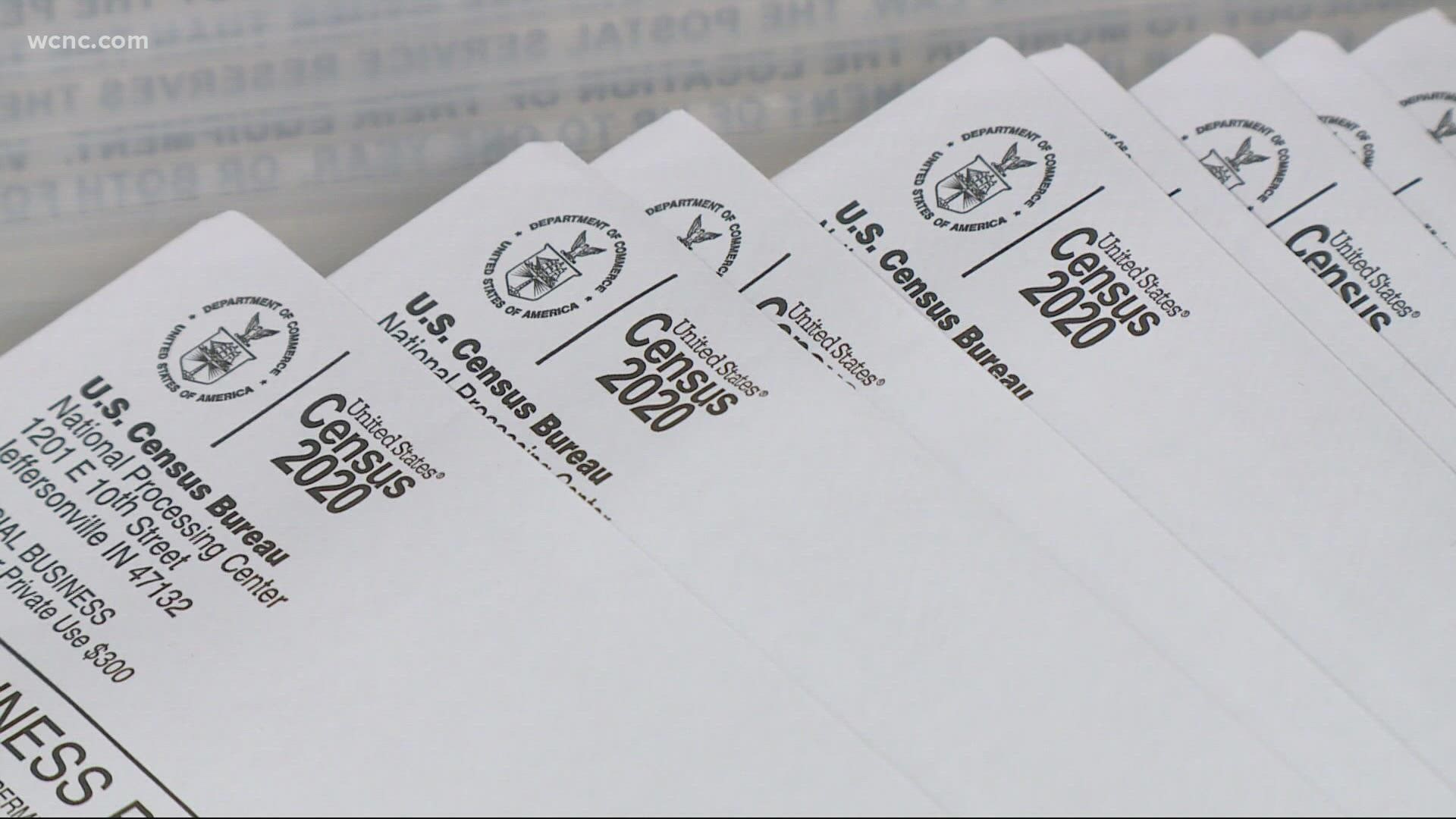CHARLOTTE, N.C. — A first glance at newly-released Census data shows a population shift away from rural areas to urban centers. Carolina Demography Director Rebecca Tippett said the data show 51 of North Carolina's 100 counties lost population over the last decade.
"A lot of our rural areas are declining," Tippett said. "We have some very significant population losses."
The 2020 data show Anson County, for example, has lost 18% of its population since 2010. Tippett said many areas declined in population more than anticipated.
Cabarrus County Commission Chairman Steve Morris knows it's much better to work through growing pains than to see residents leave. Census data show Cabarrus is now the fastest-growing county in the Charlotte metro, experiencing a nearly 27% population increase over the last ten years, adding almost 50,000 people.
"It certainly isn't a surprise. We see that every day in Cabarrus County," Morris said. "We are building schools as rapidly as we can, we are in the process of building a new courthouse, a new EMS headquarters...If I had to choose the problems, I would rather deal with the problems of growth than the other problems that some are experiencing."
Morris said people are choosing Cabarrus, because the county offers them choices, including good schools, urban and rural settings, and proximity to Charlotte with less traffic.
"We offer a lot of variety for folks and I think they appreciate that," he said. "It's a great place to live with a great quality of life."
Two South Carolina counties aren't that far behind Cabarrus as far as growth. The data show Lancaster (more than 25% population increase) and York (just under 25%) are both outpacing the remaining surrounding counties, including Mecklenburg (21%). Despite adding more than 195,000 people over the last ten years, Mecklenburg now ranks behind Wake when it comes to the largest counties in North Carolina. Wake County surpassed Mecklenburg by almost 14,000 people.
Charlotte, meanwhile, appeared on the Census list of 14 U.S. cities that gained more than 100,000 people over the last decade. Charlotte added more than 140,000 people, according to the data.
Now, the Census numbers will be used by states to redraw political maps. The Census data confirmed the state is getting another congressional district, which means a revised district map could guide who votes for which state and federal politicians until 2030.
"North Carolina is gaining the 14th seat the first time the state has ever had 14 congressional seats," political professor at Catawba college Dr. Michael Bitzer said.
Legislators have to decide where to draw the lines and where the new district will be, which can influence how public resources are allocated, from where schools are built to which roads get fixed.
"A lot of the funding mechanisms are tied to population so that means urban areas like charlotte will see an increase in federal funds and potentially an increase in state funds," Dr. Bitzer said.
This year, Republicans will lead the process since they hold the majority in the General Assembly.
"In all likelihood, if the past history of North Carolina is any indication, there will be lawsuits filed against those maps, the courts will intervene likely state courts," Dr. Bitzer said. "The first set up of the maps will be in November for candidate filings for the primaries next year, but the first real test will be the midterm elections in November."
There is still more data that will be released in the coming days and weeks, which will reveal information locally about race, age, housing and more.
Contact Nate Morabito at nmorabito@wcnc.com and follow him on Facebook, Twitter and Instagram.


